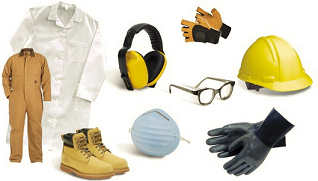
The Health & Safety at Work Act (1974) lays out what employers need to consider to make their workplaces safer. They are required to protect the health, safety and welfare of their employees and visitors to their site including contractors. The Health & Safety Executive (HSE) provide support to companies in implementing safe working practices and check that they are working safely.
When working in construction you will get training on how to work safely, and get the supervision appropriate for your experience in that role. However, it is also very important that you take reasonable care of your own health and safety and that of others by working as a team and following the instructions given for that task.
We can work safely by managing risk, we do this by completing a risk assessment of a task. We do this by asking what is the danger, what are the risks of something going wrong and how can we reduce that risk of that danger. Many of the answers are simple - use the right equipment, know what you are doing and label things correctly so we know what we are handling.
Another important element of Health & Safety is to report accidents, not just so we know someone was injured, but so we can change things to make them safer or provide more training to those that need it. As in every other aspect of life we can learn by our mistakes - in construction these accidents can be very serious so think first!
Watch a video on the signs we use to keep us safe at work: Click here
We all know a little bit more about what PPE as a result of the COVID19 crisis: Personal Protective Equipment. It protects you from injury or illness as a result of working in a hazardous environment or with dangerous materials.

Before using PPE at work you should ask if there is a way in which you can remove or reduce the hazard by changing the way in which you work. PPE should be the last resort to protecting yourself. The main items of PPE you will find on a construction site are:
- Hard hats to protect you from objects falling from above
- Safety boots to protect your feet if you drop something
- Goggles to protect your eyes from dust or splashes or corrosive liquid
- Ear plugs to protect your ears from loud noise over a long period
- High Visibility Jacket so others can see you clearly on site
- Safety Harness when working at height to protect you from a fall
Watch a video on construction site PPE: Click here
Some of the most common injuries are those related to manual handling - they are injuries to your back, joints or limbs as a result of using equipment or lifting weights. They can occur due to pulling, pushing or lifting heavy or bulky weights. Have a look at this diagram it shows what we can safely lift from different heights. You can lift a heavier weight safely from a table top than from the floor or a high shelf:

You also need to assess your ability to manage the load taking into account whether it is unstable (a pile of bricks) or damaging to hold (it is hot) and whether there are any hazards in your area like steps, slippery surfaces or vehicle routes.
Watch a video on manual handing in the construction industry: Click here
The Control of Substances Hazardous to Health (COSHH) are regulations to protect workers from ill health when working with specific substances (eg. acid) or materials (eg asbestos). The danger will depend on the length of time someone is exposed to the substance and how dangerous they are. The regulations cover a whole range or substances on a construction site from wood dust to cement.
All substances which are deemed to be dangerous are labelled:

They may be dangerous to the environment, easily set alight, at risk of exploding or be carcinogenic. In all circumstances risk assessments will be in place to ensure they are stored, handled and used correctly.
Watch a video on chemical hazards: Click here
Watch a video on COSHH signage: Click here
Fire on a construction site or in a workshop is more likely due to the activities being undertaken for example sparks from machinery, flammable liquids and using tools like a blow-torch. Each workplace will have a Fire Risk Assessment which will be reviewed regularly and may involve a visit form the fire brigade.
However careful we are though there is always the risk of fire. Extinguishers will be provided around your workplace where there is a risk. You should be trained in their use if you are expected to use them. They are also provided at all exits to ensure that everyone can escape from a building in case of a fire. There will be signage around the workplace to help guide you to raise the alarm, find the nearest fire exit and understand what action you should take.

It is also important to know which extinguisher to use for the different types of fire otherwise you can make things worse.

Surrey Fire Brigade information on extinguisher types: Click here




